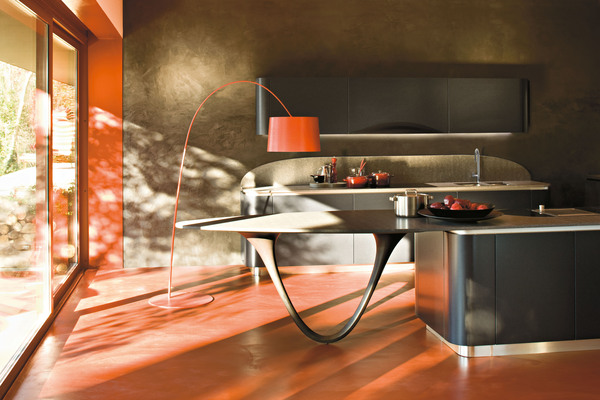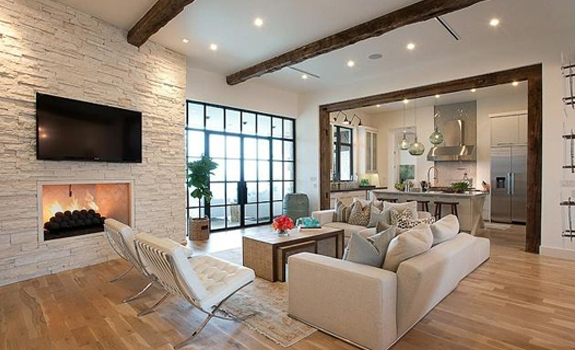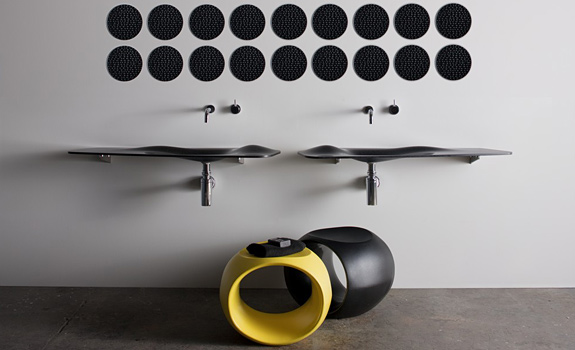Modern interior design
The modern interior design style refers to (and strictly to!) a very specific time period from our history. It appeared at the dawn of the XX-th c., quickly gained popularity, established its positions, and evolved and diversified further during and within the following five to six decades.
The new century brought new and exciting changes, boldly revolutionizing people’s minds and ideas. And just as those trends were modern for that particular time, so was named the life style of the generation that lived through it – modern.
Modern interior design style has won its independent position among a number of other similar styles, exhibiting very particular characteristic features that make it unique and recognizable.
Space. Strip off the popular in the previous couple of centuries Baroque grandeur, Renaissance theatricality and Rococo frivolity, and you see far more modest interiors defined by simplicity and aesthetics interpreted in new shapes, new designs, new artistic trends and new spatial solutions.
With no fancy ornamentations or elaborate trimming on walls and ceilings, no monumental columns, arches or alcoves, with clean, straight lines and lavishly lit open spaces, modern interiors are emptied of anything unnecessary, which makes them look spacious, uncluttered and tidy. It’s a celebration of practicality and functionality, where every element makes sense and has purpose.
And while this interior design style still focusses on natural materials and neutral colors, it also introduces new products and finishes, such as concrete, metals, chrome and glass, as well as bolder colors and new trends in arts and décor.
Color. True to its characteristic minimalism and simplicity, the modern style sticks to the natural beauty of the neutral earthy color palettes.
Early XX-th c. modern interiors would usually be designed in darker shades of brown, green and grey, up to black, staying closer to the natural colors of the natural materials dominating the space in this early stage of development of this interior design style. With time, however, colors lightened up, and in the 50-s and 60-s we see spacious and airy modern interiors featuring lighter background tones of grey and beige, spruced up with jolly pops of bolder colors in red, blue, yellow and orange.
Furniture. Modern interior furnishing bears the characteristic features of some of the greatest art trends of the XX-th c. that made a strong impact on most aspects of life, culture, architecture and design, such as Art Deco, some traces of its predecessor – Art Nouveau, as well as the Mission, and Shaker furniture styles.
Just as in every other aspect, simplicity and recognition of balance characterize the furniture in modern interiors. Furniture items have sleek, unornamented designs featuring symmetrical, straight lines, sharp rectangular edges and low profiles.
Although most furniture pieces are made of natural materials, metals have noticeable presence, too, mostly with a somewhat aesthetic purpose. Wrought iron, stainless steel and polished chrome are used for table legs, chair frames, mantelpiece accessories and staircase railings, as well as for smaller elements such as faucets, handles and knobs for kitchen cabinets, wardrobes and doors.
With the novelties of the new century came entirely new materials, too, such as plywood, plastic, synthetic rubber and fiberglass, “screaming” affordability and mass-production, diversity and modernism – the “mottos” of the new age.
Décor. Décor? What décor?! Celebrating the principles of minimalism and simple expression, modern interiors disregard the idea of introducing too much of decoration. For… “What’s not necessary, does not belong here!” The style celebrates clean and geometrically balanced straight lines, symmetry and order. Fancy décor would not seem to fit much in such interiors, would it?!
Yet, modern thinking gave birth to modern, unconventional ideas, modern concept of life style and hence, modern art trends. It is how modernism cultural subtrends such as cubism, futurism, abstract expressionism, among others, strongly influenced and defined the décor style of modern interiors. Even if modest, modern interiors décor impresses with bold artistic expression, ever pushing the boundaries of human creativity. Perhaps that’s what makes the style still very popular even in our times, a century from its birth.








